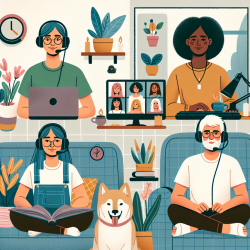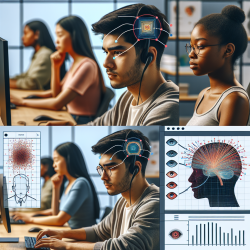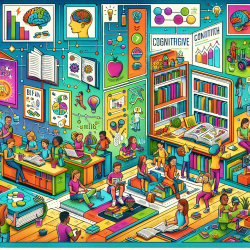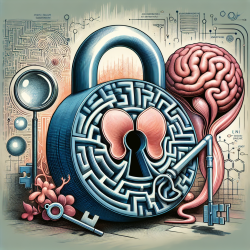In recent years, the integration of children with Autism Spectrum Disorder (ASD) into educational environments has garnered significant attention. A key element in facilitating this integration is the adaptation of physical surroundings to meet their unique needs. The research article titled "How Well Environmental Design Is and Can Be Suited to People with Autism Spectrum Disorder (ASD): A Natural Language Processing Analysis" sheds light on this critical area, offering insights that can be transformative for practitioners in speech-language pathology.
As a practitioner focused on creating optimal outcomes for children, understanding and implementing the findings from this research can significantly enhance your practice. Here are some key takeaways and actionable steps based on the research findings:
Key Findings from the Research
- Lighting: Use natural lighting while avoiding direct sunlight. LED lights with adjustable intensity and diffuse light sources are preferable to avoid sensory overload.
- Materials and Textures: Opt for smooth, wide surfaces using non-reflective and robust materials to minimize sensory disturbances.
- Colors: Employ soft, natural colors and limit color contrasts to create a calming environment.
- Acoustics: Implement sound-absorbing materials like carpets and wood furniture, and ensure good sound insulation to reduce noise levels.
- Smells and Air Quality: Ensure spaces are well-ventilated and free from strong smells to maintain a comfortable environment.
- Transition Spaces: Design buffer areas between different activities to help children orient themselves and reduce sensory confusion.
Implementing the Research Findings
To translate these findings into practical strategies, consider the following steps:
- Assessment and Customization: Conduct an initial assessment of the child's sensory preferences and aversions. Customize the therapy environment to align with these preferences, using the guidelines provided in the research.
- Collaborative Design: Work with architects and designers to create therapy spaces that incorporate these principles. This can include specific design elements like adjustable lighting, soundproofing, and designated quiet areas.
- Continuous Evaluation: Regularly evaluate the impact of the environmental design on therapy outcomes. Use data-driven methods to assess improvements in communication, behavior, and overall engagement.
- Education and Advocacy: Educate parents, teachers, and other stakeholders about the importance of environmental design. Advocate for the implementation of these principles in schools and other settings where children with ASD spend significant time.
Encouraging Further Research
While the current research provides valuable insights, there is always room for further exploration. Encourage your peers to engage in research that examines the long-term effects of environmental design on therapy outcomes. Collaborative studies can lead to the development of best practices and standardized guidelines that benefit children with ASD globally.
In conclusion, integrating the principles of environmental design into your practice can create a more supportive and effective therapy environment for children with ASD. By making data-driven decisions and continually seeking to improve, you can significantly enhance the quality of life and therapy outcomes for these children.
To read the original research paper, please follow this link: How Well Environmental Design Is and Can Be Suited to People with Autism Spectrum Disorder (ASD): A Natural Language Processing Analysis










